Nineteenth-century underwear (men’s)
Originally published at Leaves of Grass. You can comment here or there.
Please visit my New York Times Disunion article on Civil War (men’s) underwear, the basics on their form and manufacturing, laundering and lice, and soldiers’ not always orthodox ways of procurement.
Following are some extras.
At the Gaines Mill Living History weekend in July, I had the good fortune to stumble into a whole set of men’s underwear, top and bottom-and even socks. These are all made of cotton. (Deep gratitude goes to the NPS rangers and the living historians who braved the heat in authentic flesh-frying wool clothes. The interface between the two groups was, for me, a new way of seeing and hearing history.)
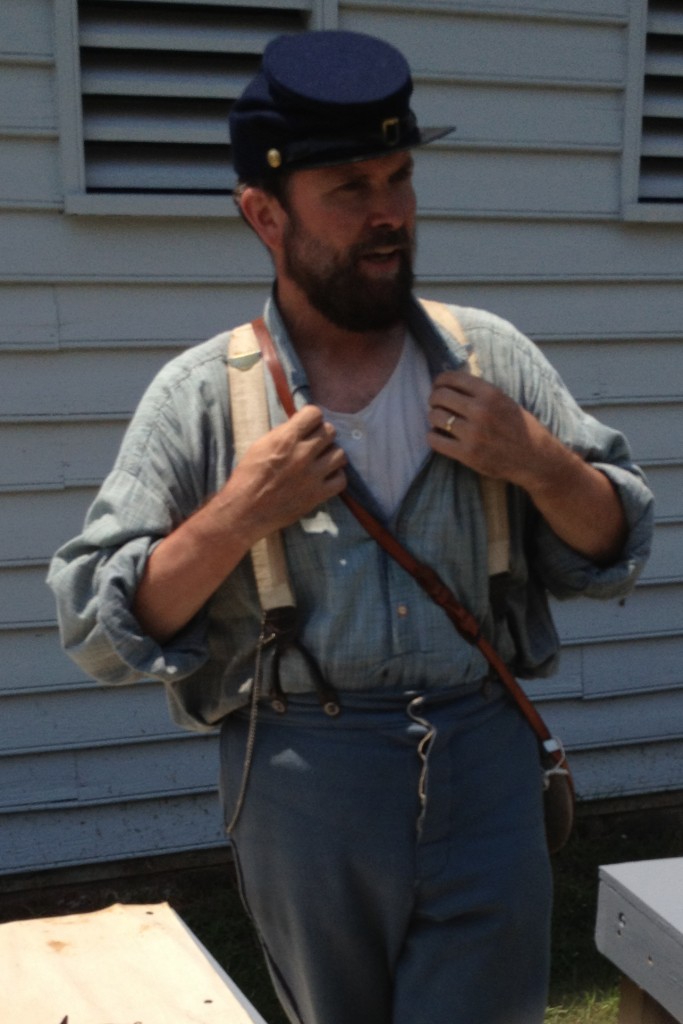
This volunteer kindly overcame his gentlemanly modesty to give us a peek at his undershirt.
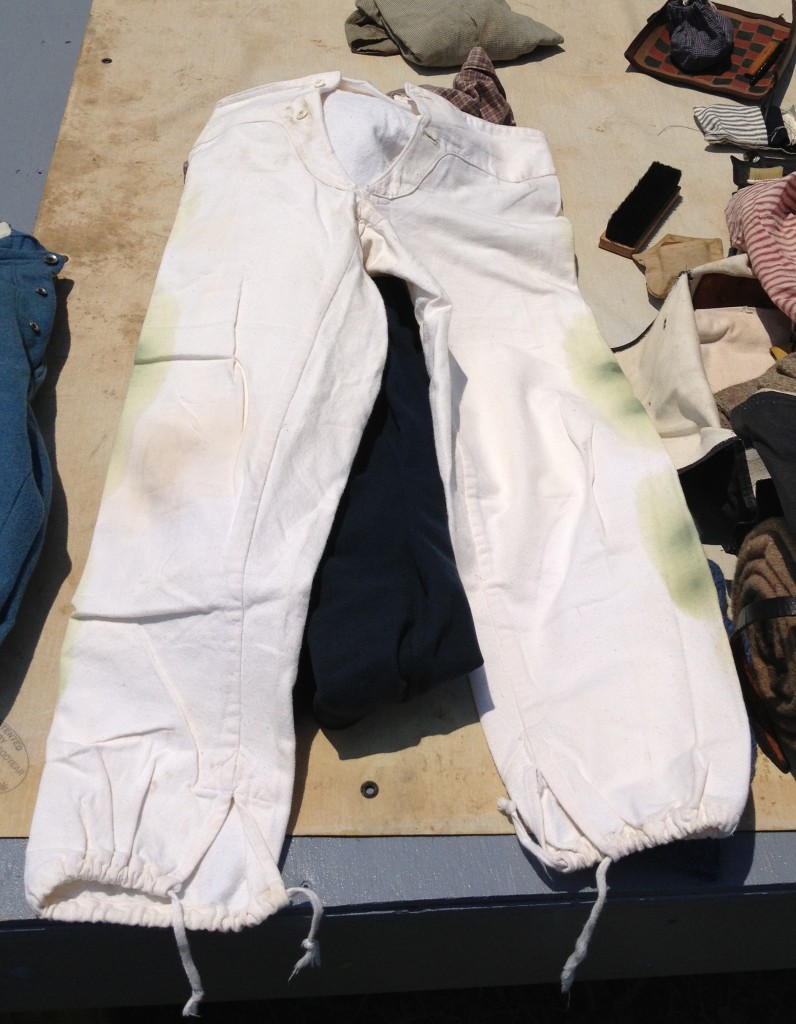
Front view of drawers. The front has a two-button closure. Long drawers would have been a must, given the heavy, rough, wool pantaloons issued to the soldiers. The stains are, alas, gun grease.
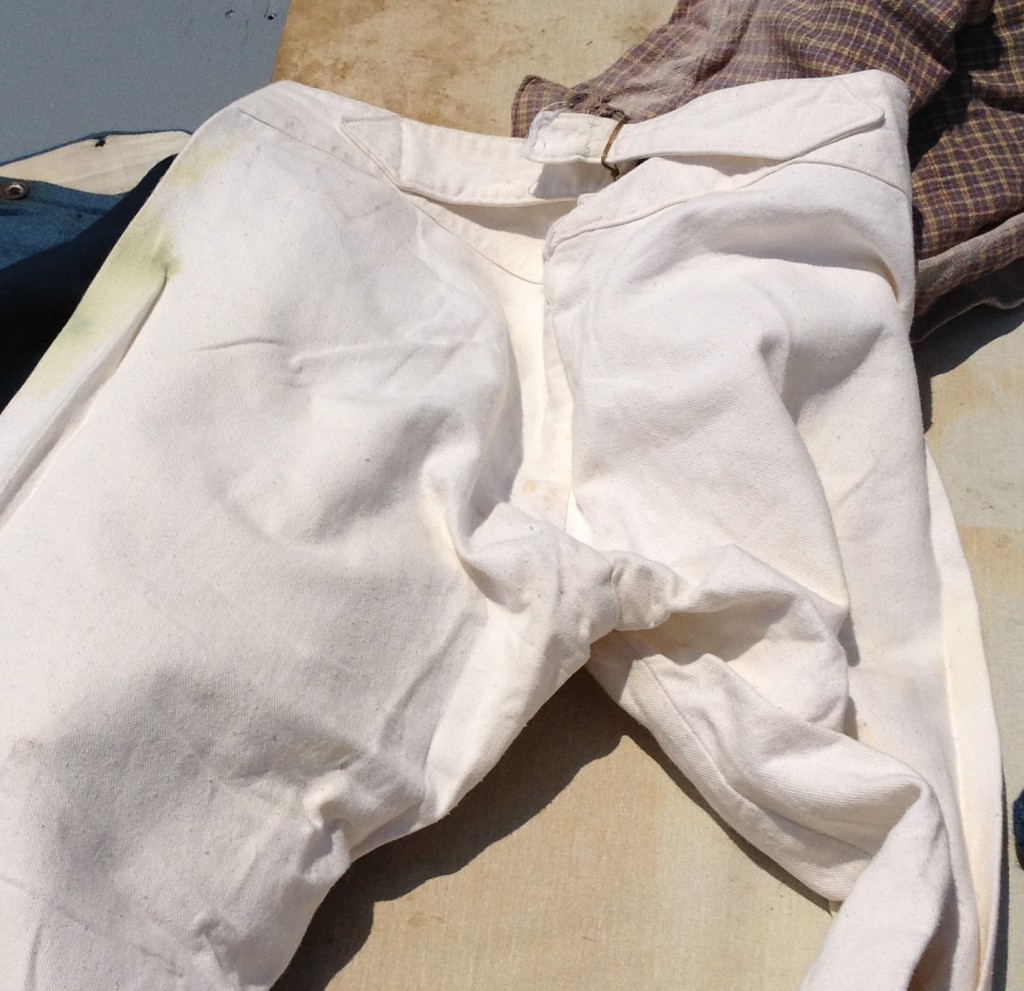
To tighten up the drawers, this pair has a buckle at the back.

This young soldier obviously hasn’t made use of his “housewife,” the sewing kit that his mother would have supplied him with when he left home. I do hope he didn’t lose it in a game of cards. The socks (both “socks” and “stockings” were in general use) pulled up over his drawers’ drawstring keep ticks out.
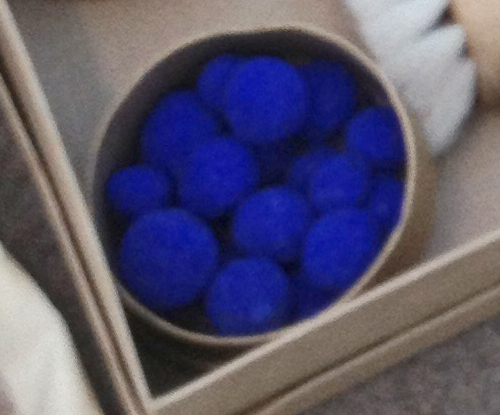
Bluing, an additive mixed with wash water, is a nonfast coloring that offsets dinginess, especially in white cloth. Most people today brighten clothes with bleach, which subtracts color. Various compounds (for example, bile) were touted as stain removers, but generally messy stuff was boiled and pounded out.
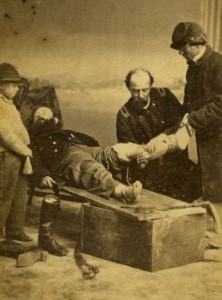
A photo of a surgeon demonstrating a leg amputation rolls away the veil, or at least a pant-leg. Long under-drawers peek out from under the edge of the rolled up pants. The dangling string is a drawstring at the hem of the drawers. (Children-at least African-American children-obviously weren’t considered too delicate to witness a man’s leg being sawn off. The little boy stands at the ready with what looks like a length of cloth: a tourniquet? a gag? a restraint?)
And finally, a splendid underwear story from Wisconsin Historical Society.